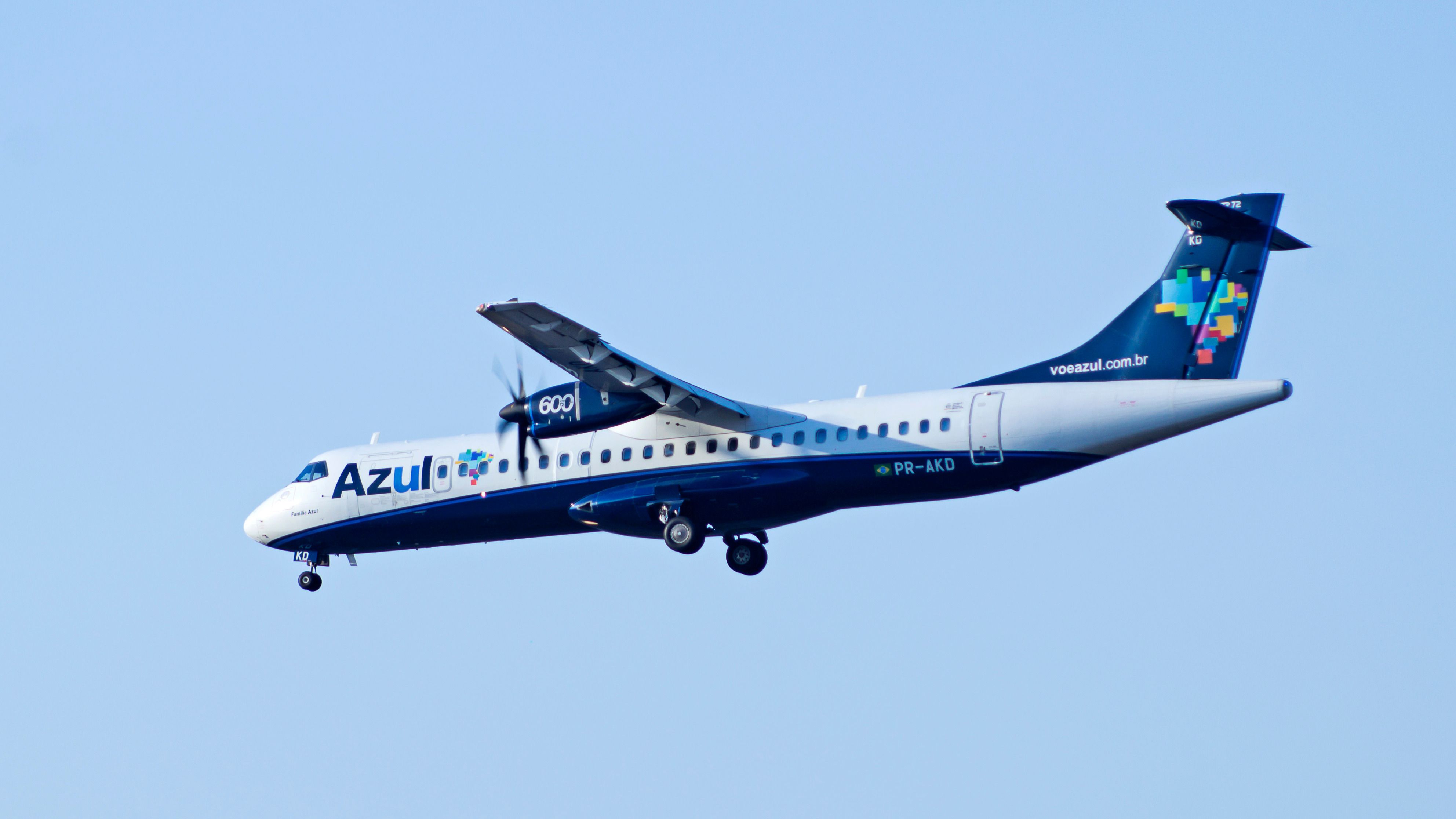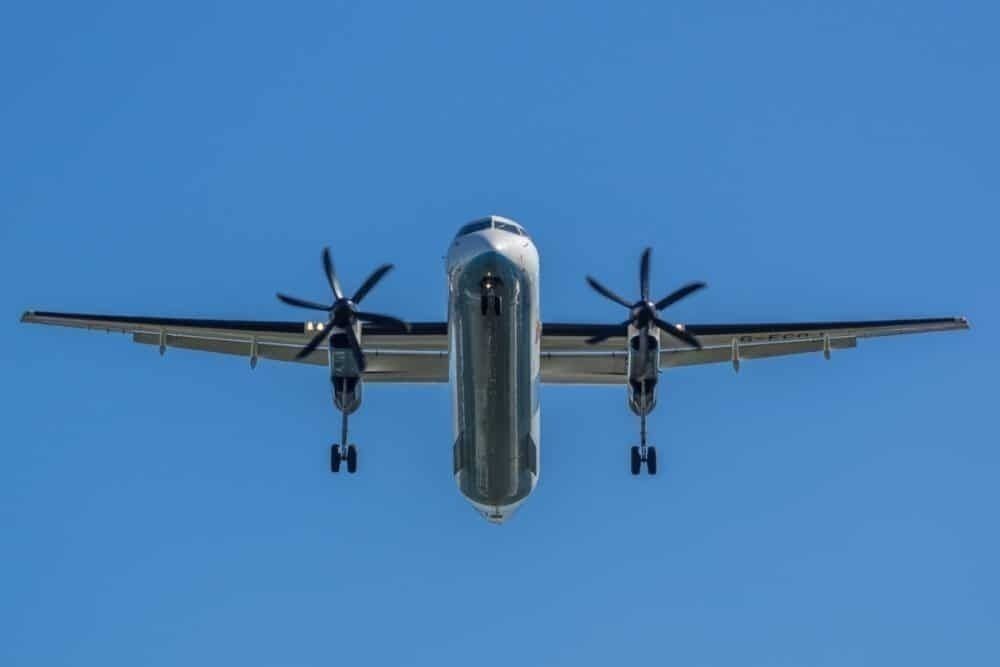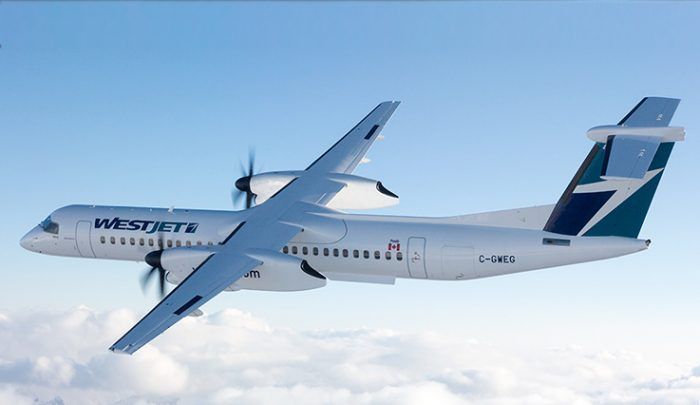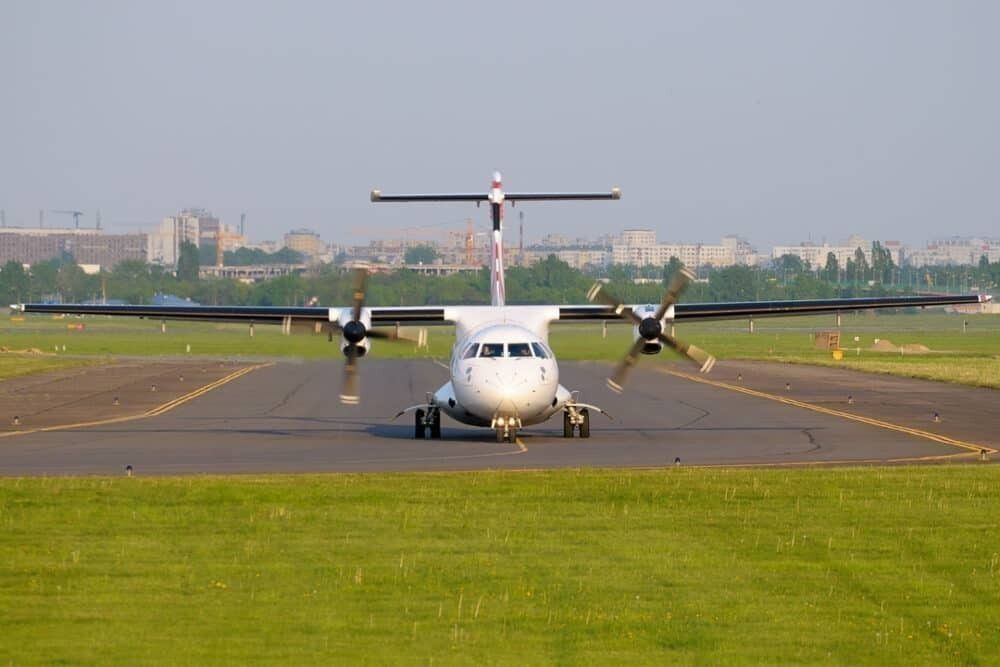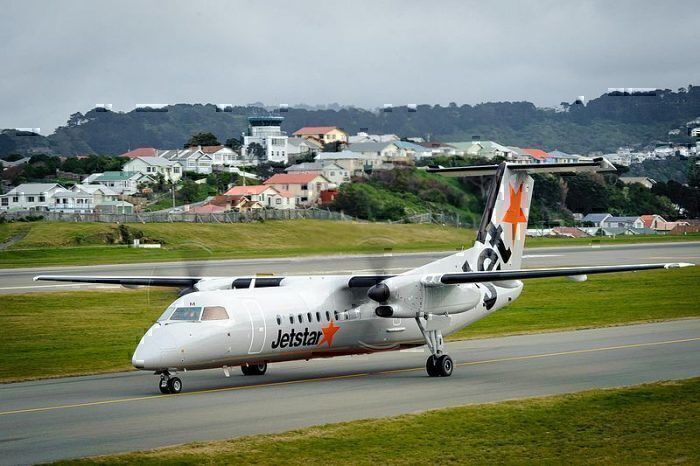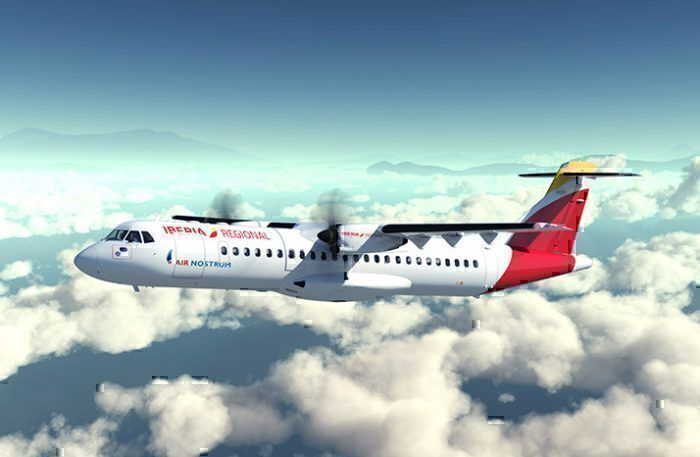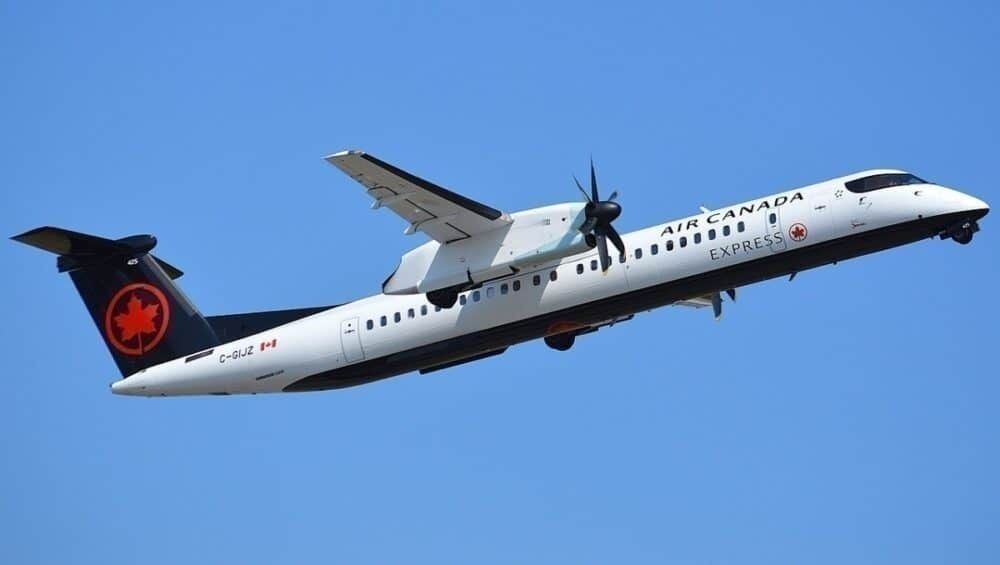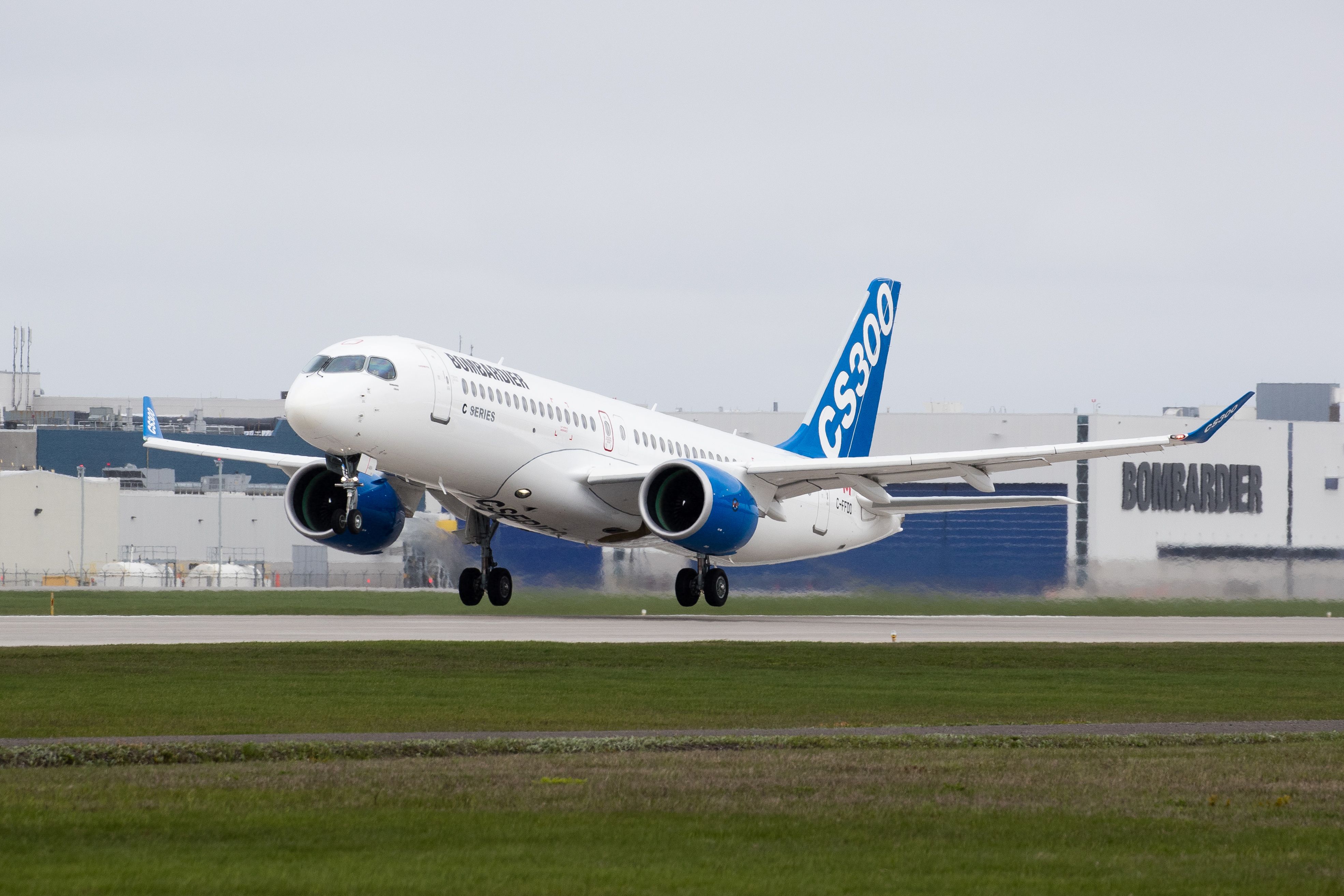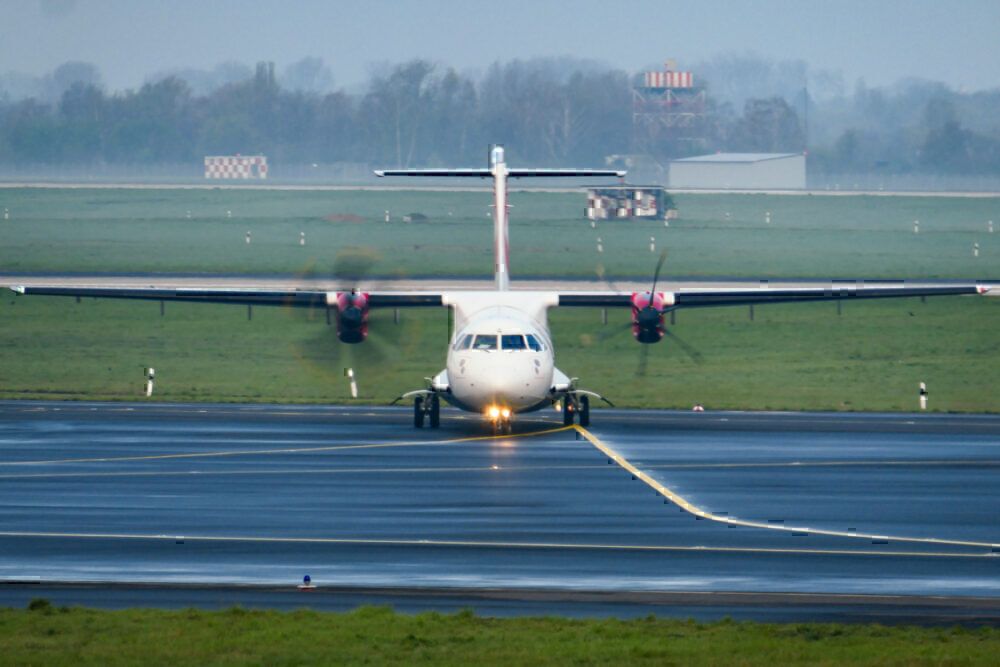If the commercial passenger jet aircraft market is a duopoly with Airbus and Boeing, then the regional turboprop market has had a similar dynamic for two companies. For the last 30 years, ATR and Bombardier have competed for dominance in the commercial turboprop sector. While other contenders have similar capacities, such as Fokker, the market for these short-ranger commuter aircraft has been dominated by the two manufacturers in recent decades.
Comparing turboprops
Before we get into comparisons, we should note that we'll be looking at the ATR 42 and 72, as well as the Bombardier Dash 8 and its variants. We do need to note that the Dash 8 program recently changed hands in 2019, with Bombardier selling the program to the Longview Aircraft Company of Canada. The manufacturer itself has been rebranded as De Havilland Aircraft Of Canada and revived the Dash 8 name, where Bombardier had once called it merely the Q400.
We mention Bombardier in the title, as well as within this article, as it has been the dominant manufacturer of the Dash 8 in recent decades, with De Havilland Aircraft Of Canada only taking over recently. With that out of the way, let's look at the battle of these two turboprop programs.
Stay informed: Sign up for our daily aviation news digest.
Dash 8 program beginnings
The Dash 8 was initially designed by de Havilland Canada, a company founded in 1928 by the British de Havilland Aircraft Company. The Canadian Government subsequently acquired de Havilland Canada in 1974.
However, it wouldn't be until the mid-80s that the first Dash 8 would take form. According to BAE Systems, the very first prototype, DHC 8-100 (C-GDNK), flew for the first time on June 20th, 1983, entering service in October 1984.
The Canadian Government would then sell the Dash 8 program to Boeing in 1986, who would later sell it to Bombardier in 1992. From 1992 to 2019, the Dash 8 program would remain with the Canadian aircraft manufacturer. The most recent variants of the Dash 8 produced by Bombardier would be called the Q-Series and exclude the 'Dash 8' name. They would be branded as the Bombardier Q100 through to Q400.
ATR program beginnings
The manufacturer's name is an acronym that stands for Aerei da Trasporto Regionale in Italian or Avions de transport régional in French. In English, this translates to Regional Transport Aircraft.
Established in November 1981, ATR began as a joint venture between Airbus co-founder Aerospatiale and Italian company Aeritalia. Both founding companies have changed shape over the years, and ATR is now a joint partnership between Airbus and Leonardo, with the company's headquarters in Toulouse, France.
Although the company was established in 1981, developing its first product, the ATR 42, took some time. This new aircraft would make its first flight in Toulouse, France, in 1984. It wasn't until 1986 that ATR would go on to launch a larger version named the ATR 72.
With the Dash 8 program morphing several times, comparing the two aircraft families is not particularly straightforward. These days, the Dash 8 program really only consists of a single variant, while ATR still produces two. However, for the sake of comparison, let's include the other most recent (yet discontinued) version of Bombardier's aircraft, the Q300.
Aircraft comparison: Q300 vs. ATR42-600
Capacity: The Bombardier Q300 best competes with the ATR42. The former can accommodate between 50 and 56 passengers, while the latter can seat up to 50 passengers.
Range: The ATR42-600 can fly an entire load of passengers 1,326km, while the Q300 has a range of 1,558km.
Take-off distance: The Q300 has a take-off distance of 1,178m, while the ATR42-600 can take off with just 1,036m of runway.
Efficiency: Aircraftcompare.com lists the ATR42-600's fuel economy at 0.758 kilometers per liter, while the Q300 covers just 0.499 kilometers per liter.
Aircraft comparison: Q400 vs. ATR72-600
The Bombardier Q400 most closely competes with the ATR72. However, the Q400 is a little over five meters longer than its competitor. This will, of course, make for a slightly skewed comparison.
Capacity: The ATR72-600 can accommodate as many as 78 passengers. The Q400 can seat an impressive 90 travelers - more than any other commercial turboprop airliner.
Range: The ATR72-600 can fly a full load of passengers 1,528km, while the Q400 has a range of 2,040km.
Take-off distance: Bombardier's Q400 has a take-off distance of roughly 1,400m, while the ATR72-600 can take off with just 1,175m of runway.
Efficiency: Aircraftcompare.com lists the ATR72-600's fuel economy at 0.333 kilometers per liter, while the Q400 covers 0.391 kilometers per liter.
Aircraft orders: The real test of popularity
According to ATR's website, the company has sold nearly 1,700 aircraft and has over 200 operators in more than 100 countries. Unfortunately, the equivalent statistics aren't available for Bombardier and the Dash 8 program.
A March 2019 Bombardier report stated that the Q300 and Q400 collectively had racked up 912 orders. After the report and subsequent sale of the program, however, De Havilland Canada would secure several more Q400 orders, including 20 from Palma Holding, along with several single-digit orders. If we include the Q100 (299 orders) and Q200 (105 orders), in addition to pre-Bombardier orders, the total gets relatively close to ATR.
How do the two companies compare?
The two competitors have had very different histories. ATR seems to be a calm and steady manufacturer, slowly developing its two aircraft lines and making improvements over the years. The Dash 8 program, on the other hand, appears chaotic and turbulent in comparison - passing from owner to owner throughout its history and being rebranded several times. This has also made our comparison article difficult, as the data isn't very consistent.
The program went from having four variants to just one and has recently been sold off by Bombardier. The latest Dash 8-400 offers more capacity and range than anything ATR can provide and thus has an advantage in that respect. However, as the only variant still in production, airlines have less flexibility for smaller operations.
Hopefully, the Dash 8 program will have a reliable and stable new home at De Havilland Canada, allowing it to remain in competition with ATR in the decades to come.
Which aircraft program do you think is better? Let us know your thoughts in the comments!
Sources: Aircraft Compare, BAE Systems

